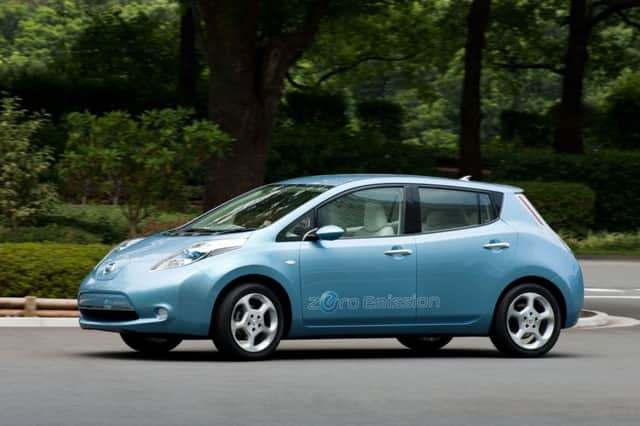Alastair Dalton: How does it feel to drive an electric car?


Sure, the vehicle I tested recently was no Tesla – the Californian electric supercars – but for a family hatchback, the Nissan LEAF was significantly nippier than another similar-size petrol model we have at home. Like many motorists I’m sure, I’d been curious for some time about what it is like to drive an electric car.
However, other than taking a test drive from a showroom, with the likely sales hassle that would ensue, there are still only limited opportunities among car hire firms in Scotland to rent an electric vehicle. My opportunity came from another quarter, with an offer from City Car Club, the main car-sharing firm in Edinburgh and Glasgow. Although now owned by car hire firm Enterprise, it provides per-hour rental rates for a £60 annual membership fee, with several electric cars in both cities.
Advertisement
Hide AdAdvertisement
Hide AdMy black LEAF was at first glance as nondescript as those parked around it, except for the cable protruding from its bonnet. But get behind the wheel, and it was that rare thing – a very different and exciting driving experience. The first thing that struck me was its simplicity. No need for an ignition key – there’s a button instead. No gears, because it’s like an automatic. And no (or little) noise, especially at low speeds. Cyclists have to contend with jaywalkers crossing in front of them without looking, and several pedestrians glanced around in surprise as they saw me approach, illustrating how many have become reliant on traffic noise alone to know if the road is clear.
However, the real joy is the fuel cost – or lack of it. In areas such as Glasgow, the city council not only provides free parking for electric vehicles in its car parks while they are being recharged, but also free electricity.
On a Friday night in the city centre there were plenty of empty charging spaces in the multi-storey I chose. Charging is different from filling up with petrol, with a plug rather than a nozzle, and a cable to attach to the charging station. But there’s no walk to the forecourt kiosk to pay – and you hold a smartcard against the charger reader for that free electricity rather than using a bank card to pay the hefty bill for another tank full.
The only fly in the ointment of this smooth process comes if you can’t get to the chargers, as happened one morning when there was a queue to enter the car park I needed to use to make an appointment on time, and the staff declined to assist in allowing me access. So I left the waiting gas guzzlers with their idling, polluting engines and was forced to use a parking meter instead, at the princely rate of 60p for 12 minutes – that’s £3 an hour.
It shows a bit of planning is required, and even more so for charging. The LEAF has a range of 90 miles, so going on longer trips requires finding charging stations en route, which is one of the car’s sat nav’s handy features. Cars with longer ranges are being introduced, including a new version of the LEAF, so that problem may just be temporary. There are also more and more rapid chargers appearing which take just 30 minutes.
But the biggest disincentive to buying an electric car remains the price, despite UK Government grants of up to £5,000, which may not continue after February. Future support is expected to be announced around the time of the Chancellor’s autumn statement next Wednesday. With the LEAF currently costing more than £20,000 new, going electric remains unattractive for many motorists. So the outlook remains unclear.